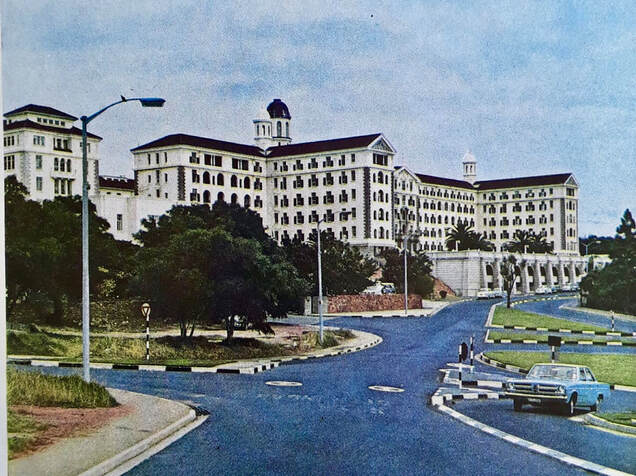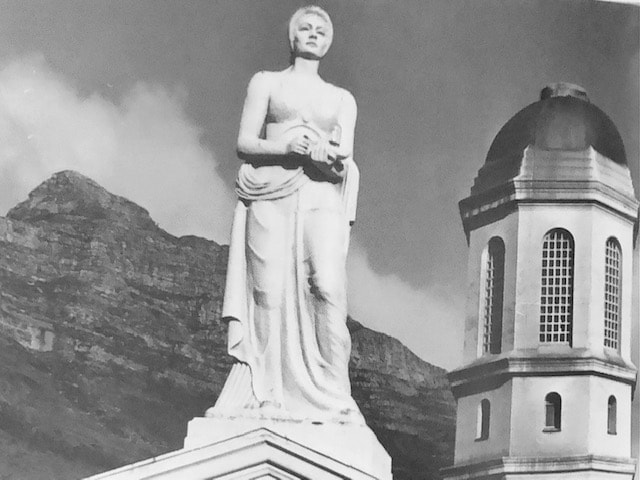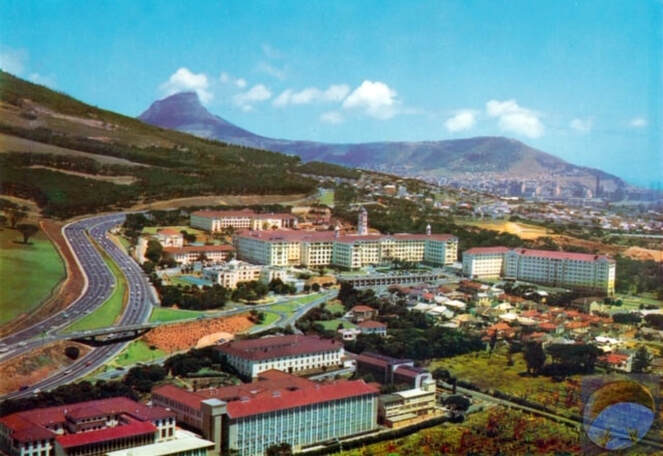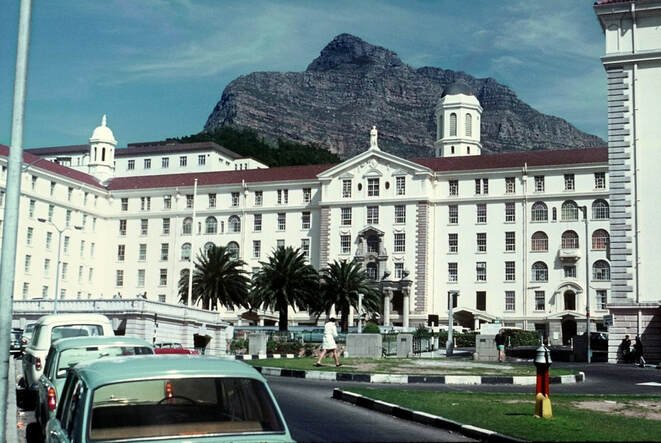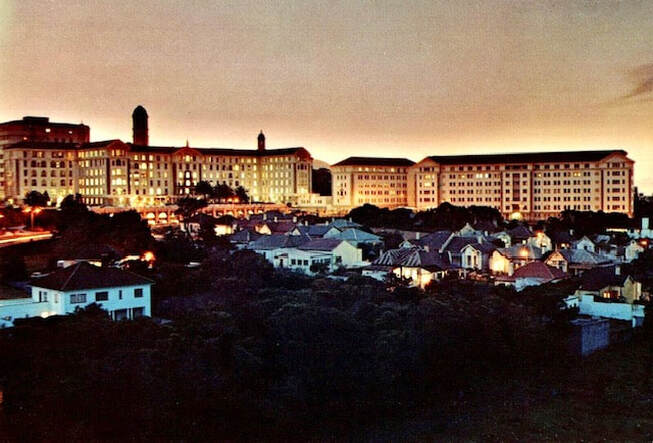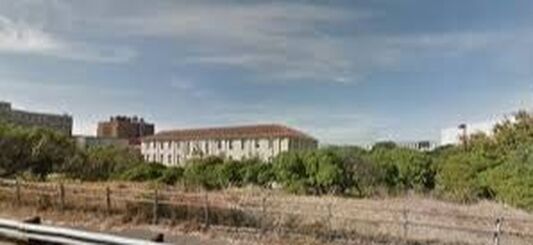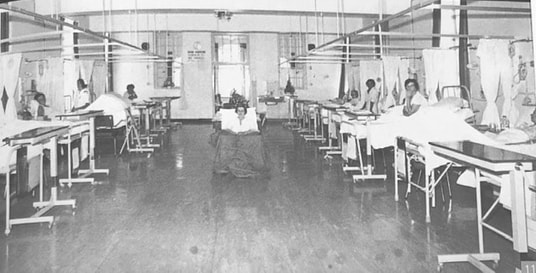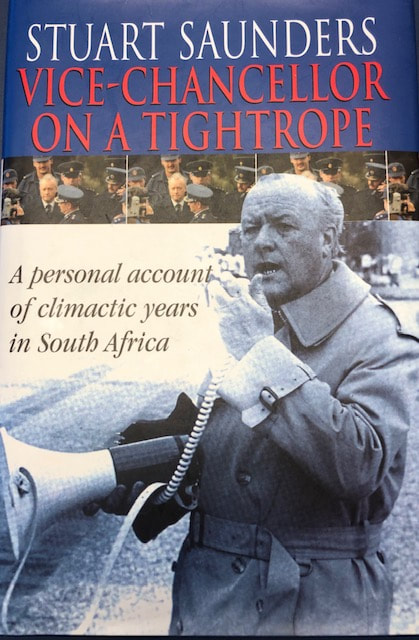The Wernher & Beit Complex
The Wernher & Beit complex constitutes the oldest named buildings on the University of Cape Town (UCT) Medical Campus, and remains the central core of the Faculty of Health Sciences. In 1925 the Governor General, the Earl of Athlone, laid the foundation stone of the first building, which was to house pathology, bacteriology and the Dean’s office. Clinical departments followed later. The subsequent adjacent building was the home of anatomy and physiology, previously located on the Hiddingh campus. The two stately buildings made up the entire Medical School, and the adjacent university-owned land lay vacant until 1938 when Groote Schuur Hospital (GSH), the teaching hospital, was finally completed.
Sir Julius Charles Wernher , 1st Baronet (1850 - 1912),1 was a German-born Randlord and an art collector, who built a fortune in the diamond mines of Kimberley. He returned to London where he continued to develop his business interests and developed a passion for collecting art. At the time of his death he was one of the richest men in the UK with a then fortune of £11 million (R142 million).
Alfred Beit (1853 - 1906)2 was born in Hamburg and emigrated to the Cape Colony in 1875 during the ‘diamond rush’ at Kimberley. He became one of a group of financiers who gained control of the diamond-mining claims in the Central, Du Toitspan, and De Beers mines, becoming life-governor of De Beers. With Cecil Rhodes, he financed the disastrous Jameson Raid of late 1895. On his death in 1906, the Beit Trust was formed, large sums of money being bequeathed for university education and research in South Africa, Rhodesia, Britain and Germany. One bequest was for the establishment of an educational institution in Johannesburg, provided the money was used within 10 years. Fortunately for UCT, dragging of feet to the north led to the non-utilisation of the bequest. General Smuts, then Minister of Education, went to London and visited deceased Alfred’s brother Otto, together with the invited Julius Wernher, and persuaded them to establish a Medical School on the Rhodes estate in Cape Town.
The Wolfson Pavilion
The Wernher & Beit complex underwent extensive renovations in 2004 - 2006, architects Gabriel Fagan and Associates winning an award for their work. They linked the north and south buildings, renovated and expanded them. The spacious glass-clad link building is called the Wolfson Pavilion. The whole complex was named the Institute of Infectious Disease and Molecular Medicine (IIDMM). Much of the generous funding came from the Wolfson Foundation.
Sir Leonard Gordon Wolfson, 1st Baron Wolfson (1927 - 2010),3 was a British businessman, and son of Great Universal Stores magnate Sir Isaac Wolfson, 1st Baronet. He was Chairman of the Wolfson Foundation and was raised to the peerage as Baron Wolfson of Marylebone in 1985. In much he followed in the footsteps of his father, Isaac, of whom Lord Young of Graffham once said: ‘He loved making money, and he loved giving it away.’
The Barnard Fuller Building
The administrative offices and office of the Dean reside in this building, as well as a refectory and certain named rooms (see below), a squash court and various offices.
E Barnard Fuller 4 , 5 played a key role in developing the UCT Medical School facilities when the university was still known as the South African College, and later, when it became the University of Cape Town. Educated at the South African College, he went on to qualify as a doctor at Edinburgh University, graduating with first class honours in 1891, returning to Cape Town in 1892. In 1907, Fuller said: ‘Looking into the future, I see before me as in a vision a great teaching University arising under the shadow of old Table Mountain and a part of that University is composed of a well-equipped Medical School.’ He helped fulfil this vision and grow the Medical School, campaigning for the Union Government to fund chairs in anatomy, physiology and other fields from 1910. His contributions to the formation of the Medical School continued tirelessly. He became President of Convocation and Chairman both of Senate and University Council. In 1940 UCT conferred an honorary Doctorate of Laws upon him.
The Jolly Lecture Theatre
The first Physiology Lecture Theatre was situated in the Anatomy and Physiology Building on the Hiddingh campus in the Company Gardens, and in 1929 this was relocated to the new Wernher & Beit buildings on the Rhodes Estate. In 1938 it was named the Jolly Lecture Theatre after the death of William Jolly, much admired Professor of Physiology. Extensive renovations of the original building complexes in 2005 led to the transfer of his name to the last intact historical lecture theatre, which has been restored to its original form and carries this cheerful name.
William Tasker Adam Jolly, DSc, LLD (Hon Ed),6 was the first (1911) Professor of Physiology at UCT, and in South Africa. He was Dean of the Medical Faculty from 1918 to 1931. In 1920 he established the Students Medical Society (later Medical Students Council, then the Health Sciences Students Council), and he also founded the Medical Library. He was President of the British Medical Association (Cape Western Branch). He published extensively, and was called ‘the father of medical research in South Africa’. He gained an international reputation for his research into the electrical activity of the heart, and made a major contribution to the development of the electrocardiograph (ECG) machine.
The Falconer Lecture Theatre
The Falconer Lecture Theatre is located on the J (previously E) floor of the old GSH building. It is a classic wooden horseshoe of seats which have been occupied by generations of clinical students, who leaned forward to see signs demonstrated on patients, or dozed back during didactic lectures.
Arthur Wellesley Falconer, 7 an Aberdeen graduate, was appointed as the first Professor of Medicine in 1919, a position he held until 1938 when he became Principal and Vice-Chancellor of the University. At this time UCT was the only university offering a medical degree in the country. Black students were officially allowed to enrol for the first time during his tenure as Vice-Chancellor and Principal, and the first admissions followed from 1940. He retired in 1947. Known as ‘Oubaas’ by the students, he was enormously popular, and was called one of the ‘Big Three’, the other 2 being Charles Saint (surgery) and Cuthbert Creighton (obstetrics and gynaecology). On his retirement the Chair of Medicine was divided in two, to be occupied by J F Brock and F Forman, who then taught in the newly built GSH, where the lecture theatre resides.
The J S Marais Laboratory
The J S Marais Laboratory is located between the Chris Barnard Building and the Academic Mortuary. It is now the Pathology Teaching Laboratory of the Clinical Laboratory Sciences Department.
The Jacobus Stephanus Marais 6 Memorial Research Fund was bequeathed in 1934 for ‘research work in surgery’, through the good offices and influence of his medical nephew Dr D H Pheiffer. The money was used initially for scholarships, but subsequently to build the J S Marais Surgical Research Laboratory in 1958, where Chris Barnard performed his ground-breaking heart transplant research.
The Chris Barnard Building
An imposing nine-storey building occupies the northern boundary of the medical campus, and was built in consequence of the first human heart transplant, performed in 1967. Originally called the South African Mining Industry Organ Transplant (SAMIOT) Building, or Cape Heart Building, it was opened in 1973 to house all aspects of cardiac research. The name was changed to the Chris Barnard Building after Barnard’s death.
Christiaan Neethling Barnard (1922 - 2001)8 was born in Beaufort West, and qualified at UCT in 1946. He was fascinated by research and obtained two doctorates at UCT – ‘The treatment of tuberculous meningitis’ (1953), and ‘The aetiology of congenital intestinal atresia‘ (1958). He studied cardiovascular surgery at the University of Minnesota, and returned to UCT as Head of Cardiovascular Surgery. He performed the world’s first human heart transplant operation on 3 December 1967. Barnard’s innovations in cardiac surgery brought him honours from a host of foreign medical societies, governments, universities, and other institutions.
The Stuart Saunders Reading Room
This attractive room is on the first floor of the Medical Library, and was previously known as ‘The Doctor’s Room.’ Among the historically interesting contents are an oak table and chairs (bearing the inscription BMA) which were used in the Wale Street offices of the British Medical Association, and in 1936 incorporated into the Medical Library in the Werner & Beit Complex. The new library was completed in 1953. It is a quiet room where postgraduates come to read and work under the watchful and encouraging eye of the room-named person in the picture on the north wall.
Stuart Saunders 9 is a graduate of UCT (1953), who qualified as a physician, and became Professor and Head of the Department of Medicine (1971 - 1980), and then Vice-Chancellor of the University (1981 - 1997). He is co-founder of the Liver Clinic and Liver Research Unit. He holds honorary doctoral degrees from the following universities: Rhodes, Princeton, Aberdeen, Toronto, Sheffield and his alma mater, UCT. He has been a Senior Advisor to the Andrew W Mellon Foundation. He was awarded the Order of the Baobab (Silver) by the President of South Africa.
The Helen Brown Reading Room
The reference and reading room on the ground floor of the Medical Library bears a plaque, unveiled in 2003, which reads: ‘Helen Annan Brown 1913 - 1999. This room commemorates the dedication and knowledge of an exceptional clinician and teacher.’
Helen Brown 10 is best remembered by generations of medical students as the inspiring physician who worked on the A floor of the old GSH, and became the head of her medical firm there. Past students will evoke her teaching rounds, always at the bedside, always teaching with the basic tenets of diagnosis by detailed history and thorough examination. The daughter of Alexander Brown, Professor of Applied Mathematics at UCT, she qualified in 1935 and spent time in the UK, serving at the Royal Postgraduate Medical School in London, and at the outbreak of the Second World War, the Blood Transfusion Service in Slough. She returned to UCT in 1942, joining the Department of Medicine, an association she held until her retirement in 1991. She opened the first blood bank at GSH, and cemented her reputation as a learned and innovative physician and teacher.
The Wernher & Beit complex constitutes the oldest named buildings on the University of Cape Town (UCT) Medical Campus, and remains the central core of the Faculty of Health Sciences. In 1925 the Governor General, the Earl of Athlone, laid the foundation stone of the first building, which was to house pathology, bacteriology and the Dean’s office. Clinical departments followed later. The subsequent adjacent building was the home of anatomy and physiology, previously located on the Hiddingh campus. The two stately buildings made up the entire Medical School, and the adjacent university-owned land lay vacant until 1938 when Groote Schuur Hospital (GSH), the teaching hospital, was finally completed.
Sir Julius Charles Wernher , 1st Baronet (1850 - 1912),1 was a German-born Randlord and an art collector, who built a fortune in the diamond mines of Kimberley. He returned to London where he continued to develop his business interests and developed a passion for collecting art. At the time of his death he was one of the richest men in the UK with a then fortune of £11 million (R142 million).
Alfred Beit (1853 - 1906)2 was born in Hamburg and emigrated to the Cape Colony in 1875 during the ‘diamond rush’ at Kimberley. He became one of a group of financiers who gained control of the diamond-mining claims in the Central, Du Toitspan, and De Beers mines, becoming life-governor of De Beers. With Cecil Rhodes, he financed the disastrous Jameson Raid of late 1895. On his death in 1906, the Beit Trust was formed, large sums of money being bequeathed for university education and research in South Africa, Rhodesia, Britain and Germany. One bequest was for the establishment of an educational institution in Johannesburg, provided the money was used within 10 years. Fortunately for UCT, dragging of feet to the north led to the non-utilisation of the bequest. General Smuts, then Minister of Education, went to London and visited deceased Alfred’s brother Otto, together with the invited Julius Wernher, and persuaded them to establish a Medical School on the Rhodes estate in Cape Town.
The Wolfson Pavilion
The Wernher & Beit complex underwent extensive renovations in 2004 - 2006, architects Gabriel Fagan and Associates winning an award for their work. They linked the north and south buildings, renovated and expanded them. The spacious glass-clad link building is called the Wolfson Pavilion. The whole complex was named the Institute of Infectious Disease and Molecular Medicine (IIDMM). Much of the generous funding came from the Wolfson Foundation.
Sir Leonard Gordon Wolfson, 1st Baron Wolfson (1927 - 2010),3 was a British businessman, and son of Great Universal Stores magnate Sir Isaac Wolfson, 1st Baronet. He was Chairman of the Wolfson Foundation and was raised to the peerage as Baron Wolfson of Marylebone in 1985. In much he followed in the footsteps of his father, Isaac, of whom Lord Young of Graffham once said: ‘He loved making money, and he loved giving it away.’
The Barnard Fuller Building
The administrative offices and office of the Dean reside in this building, as well as a refectory and certain named rooms (see below), a squash court and various offices.
E Barnard Fuller 4 , 5 played a key role in developing the UCT Medical School facilities when the university was still known as the South African College, and later, when it became the University of Cape Town. Educated at the South African College, he went on to qualify as a doctor at Edinburgh University, graduating with first class honours in 1891, returning to Cape Town in 1892. In 1907, Fuller said: ‘Looking into the future, I see before me as in a vision a great teaching University arising under the shadow of old Table Mountain and a part of that University is composed of a well-equipped Medical School.’ He helped fulfil this vision and grow the Medical School, campaigning for the Union Government to fund chairs in anatomy, physiology and other fields from 1910. His contributions to the formation of the Medical School continued tirelessly. He became President of Convocation and Chairman both of Senate and University Council. In 1940 UCT conferred an honorary Doctorate of Laws upon him.
The Jolly Lecture Theatre
The first Physiology Lecture Theatre was situated in the Anatomy and Physiology Building on the Hiddingh campus in the Company Gardens, and in 1929 this was relocated to the new Wernher & Beit buildings on the Rhodes Estate. In 1938 it was named the Jolly Lecture Theatre after the death of William Jolly, much admired Professor of Physiology. Extensive renovations of the original building complexes in 2005 led to the transfer of his name to the last intact historical lecture theatre, which has been restored to its original form and carries this cheerful name.
William Tasker Adam Jolly, DSc, LLD (Hon Ed),6 was the first (1911) Professor of Physiology at UCT, and in South Africa. He was Dean of the Medical Faculty from 1918 to 1931. In 1920 he established the Students Medical Society (later Medical Students Council, then the Health Sciences Students Council), and he also founded the Medical Library. He was President of the British Medical Association (Cape Western Branch). He published extensively, and was called ‘the father of medical research in South Africa’. He gained an international reputation for his research into the electrical activity of the heart, and made a major contribution to the development of the electrocardiograph (ECG) machine.
The Falconer Lecture Theatre
The Falconer Lecture Theatre is located on the J (previously E) floor of the old GSH building. It is a classic wooden horseshoe of seats which have been occupied by generations of clinical students, who leaned forward to see signs demonstrated on patients, or dozed back during didactic lectures.
Arthur Wellesley Falconer, 7 an Aberdeen graduate, was appointed as the first Professor of Medicine in 1919, a position he held until 1938 when he became Principal and Vice-Chancellor of the University. At this time UCT was the only university offering a medical degree in the country. Black students were officially allowed to enrol for the first time during his tenure as Vice-Chancellor and Principal, and the first admissions followed from 1940. He retired in 1947. Known as ‘Oubaas’ by the students, he was enormously popular, and was called one of the ‘Big Three’, the other 2 being Charles Saint (surgery) and Cuthbert Creighton (obstetrics and gynaecology). On his retirement the Chair of Medicine was divided in two, to be occupied by J F Brock and F Forman, who then taught in the newly built GSH, where the lecture theatre resides.
The J S Marais Laboratory
The J S Marais Laboratory is located between the Chris Barnard Building and the Academic Mortuary. It is now the Pathology Teaching Laboratory of the Clinical Laboratory Sciences Department.
The Jacobus Stephanus Marais 6 Memorial Research Fund was bequeathed in 1934 for ‘research work in surgery’, through the good offices and influence of his medical nephew Dr D H Pheiffer. The money was used initially for scholarships, but subsequently to build the J S Marais Surgical Research Laboratory in 1958, where Chris Barnard performed his ground-breaking heart transplant research.
The Chris Barnard Building
An imposing nine-storey building occupies the northern boundary of the medical campus, and was built in consequence of the first human heart transplant, performed in 1967. Originally called the South African Mining Industry Organ Transplant (SAMIOT) Building, or Cape Heart Building, it was opened in 1973 to house all aspects of cardiac research. The name was changed to the Chris Barnard Building after Barnard’s death.
Christiaan Neethling Barnard (1922 - 2001)8 was born in Beaufort West, and qualified at UCT in 1946. He was fascinated by research and obtained two doctorates at UCT – ‘The treatment of tuberculous meningitis’ (1953), and ‘The aetiology of congenital intestinal atresia‘ (1958). He studied cardiovascular surgery at the University of Minnesota, and returned to UCT as Head of Cardiovascular Surgery. He performed the world’s first human heart transplant operation on 3 December 1967. Barnard’s innovations in cardiac surgery brought him honours from a host of foreign medical societies, governments, universities, and other institutions.
The Stuart Saunders Reading Room
This attractive room is on the first floor of the Medical Library, and was previously known as ‘The Doctor’s Room.’ Among the historically interesting contents are an oak table and chairs (bearing the inscription BMA) which were used in the Wale Street offices of the British Medical Association, and in 1936 incorporated into the Medical Library in the Werner & Beit Complex. The new library was completed in 1953. It is a quiet room where postgraduates come to read and work under the watchful and encouraging eye of the room-named person in the picture on the north wall.
Stuart Saunders 9 is a graduate of UCT (1953), who qualified as a physician, and became Professor and Head of the Department of Medicine (1971 - 1980), and then Vice-Chancellor of the University (1981 - 1997). He is co-founder of the Liver Clinic and Liver Research Unit. He holds honorary doctoral degrees from the following universities: Rhodes, Princeton, Aberdeen, Toronto, Sheffield and his alma mater, UCT. He has been a Senior Advisor to the Andrew W Mellon Foundation. He was awarded the Order of the Baobab (Silver) by the President of South Africa.
The Helen Brown Reading Room
The reference and reading room on the ground floor of the Medical Library bears a plaque, unveiled in 2003, which reads: ‘Helen Annan Brown 1913 - 1999. This room commemorates the dedication and knowledge of an exceptional clinician and teacher.’
Helen Brown 10 is best remembered by generations of medical students as the inspiring physician who worked on the A floor of the old GSH, and became the head of her medical firm there. Past students will evoke her teaching rounds, always at the bedside, always teaching with the basic tenets of diagnosis by detailed history and thorough examination. The daughter of Alexander Brown, Professor of Applied Mathematics at UCT, she qualified in 1935 and spent time in the UK, serving at the Royal Postgraduate Medical School in London, and at the outbreak of the Second World War, the Blood Transfusion Service in Slough. She returned to UCT in 1942, joining the Department of Medicine, an association she held until her retirement in 1991. She opened the first blood bank at GSH, and cemented her reputation as a learned and innovative physician and teacher.
| uct_medical_school_no_1.pdf | |
| File Size: | 3229 kb |
| File Type: | |

